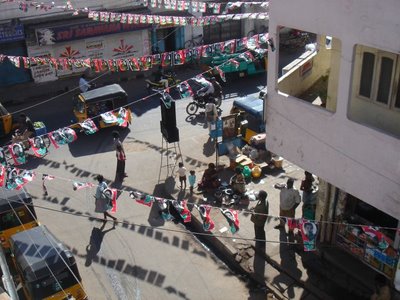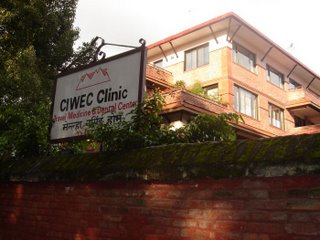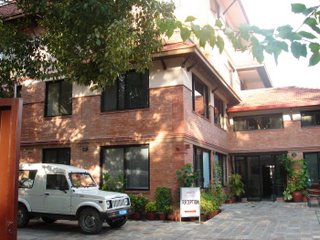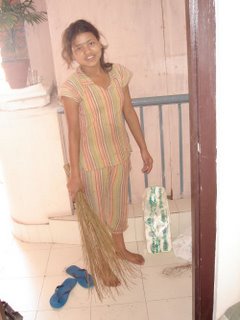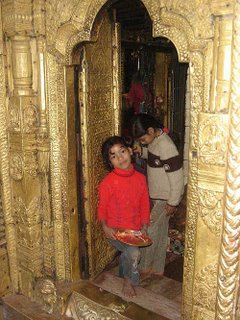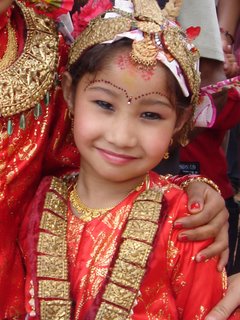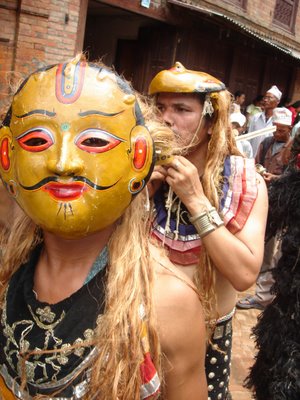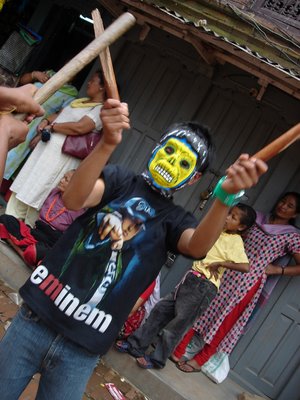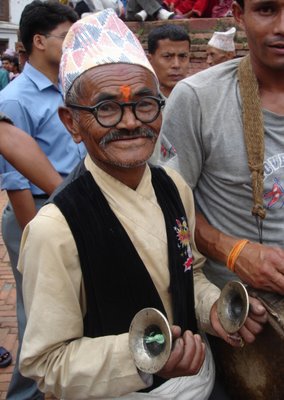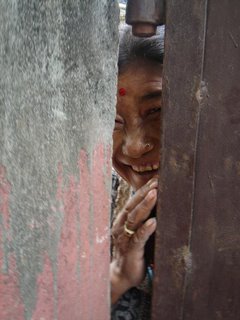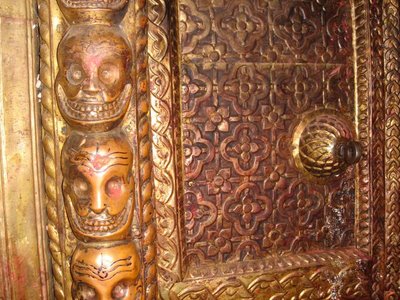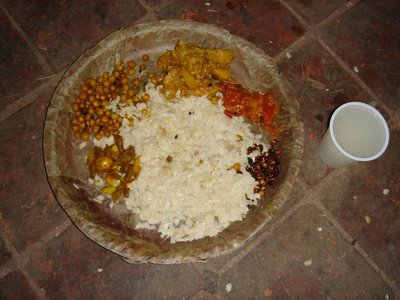Kathmandu & Bhaktapur, Nepal
I'm recovering rapidly from the microorganic close encounter. I can't
 wait to get out of Kathmandu (charmingly chaotic as it is, it's also very polluted) and seek out some of the roads less travelled - especially now that the weather's cooling off.
wait to get out of Kathmandu (charmingly chaotic as it is, it's also very polluted) and seek out some of the roads less travelled - especially now that the weather's cooling off.One such road leads to Bhaktapur, a sort of medieval tantric city frozen in a time-warp. No electric signboards, no heavy vehicles within city limits, no blaring music from shoppe corners and no modern, concrete buildings. In fact, there are no buildings more than 4 stories or so high - it's in the local code.
Bhaktapur was designed in the shape of a semi-mandala with the Eight Mother Goddesses (ashtamatrikas) at various corners, protecting the city. A goddess temple is the centrepiece and heart of the city. This protection is ritually renewed every year with the elaborate cycle of festivals and observances for the various protector deities. The old gods live on in Bhaktapur.
There are no paved, blacktop roads - all the roads and narrow winding lanes are cobblestone and brick. Even the newer buildings are built
 according to traditional form. There is nothing like a supermarket or mall, only the open air market on the square, with vegetables, jeans and t-shirts being sold on the sunbaked brick. The over-30 generation stride by with dignity wearing their traditional red-and-black Pataasi saris and earsfull of gold button-like rings. For the men, topi, walking stick, and kurta-salwar are de rigeur.
according to traditional form. There is nothing like a supermarket or mall, only the open air market on the square, with vegetables, jeans and t-shirts being sold on the sunbaked brick. The over-30 generation stride by with dignity wearing their traditional red-and-black Pataasi saris and earsfull of gold button-like rings. For the men, topi, walking stick, and kurta-salwar are de rigeur.Every house has "an old folk" sitting out front. I can't imagine these people putting their elders away in
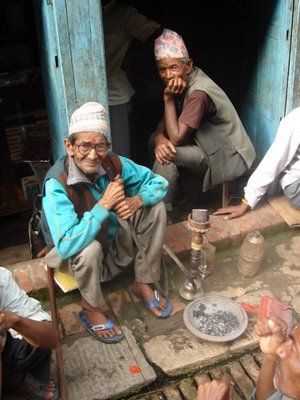 a home. Even up to a very ripe age, they are active and doing work inside the home as well as out in the market. Women sit in the sunshine knitting hats and sweaters, processing yarn on spinning wheels, sifting rice, sorting lentils. Men are often seen herding small bunches of goats or sheep with a stick...but the elder gents are usually just chit-chatting or enjoying a hukka pipe.
a home. Even up to a very ripe age, they are active and doing work inside the home as well as out in the market. Women sit in the sunshine knitting hats and sweaters, processing yarn on spinning wheels, sifting rice, sorting lentils. Men are often seen herding small bunches of goats or sheep with a stick...but the elder gents are usually just chit-chatting or enjoying a hukka pipe.Just one hour from Kathmandu by local bus, the bricks of Bhaktapur just ooze old-world charm. Probably the teenagers who live there are terribly bored - there is certainly nothing more racy or modern than the local internet cafe, for them. Many of the young people are busy learning the traditional arts of thangka (Buddhist religious scroll) painting, intricate woodcarving, mask-making, brasswork, and crafting traditional musical instruments.
Bhaktapur is home to the Nepali and Newari traditional arts, all of which are entertwined with the religious beliefs of the area. The Kathmandu University School of Music makes its home there in a brick bungalow complex by the riverside at Chuping Ghat.
 Their gardens, though modest, would not look out of place in the south of France - that is, if there were Hindu temples and shrines in the middle of the French courtyards.
Their gardens, though modest, would not look out of place in the south of France - that is, if there were Hindu temples and shrines in the middle of the French courtyards.Here are just a few of the 100s of photos I took while in Bhaktapur during Gai Jatra.
Kathmandu Weather Report: Wonderfully cool mornings till about 10, humid afternoons usually with cloud cover; afternoon rainfall,;pleasant evenings (after 6pm). The mosquitos are mostly gone now.

